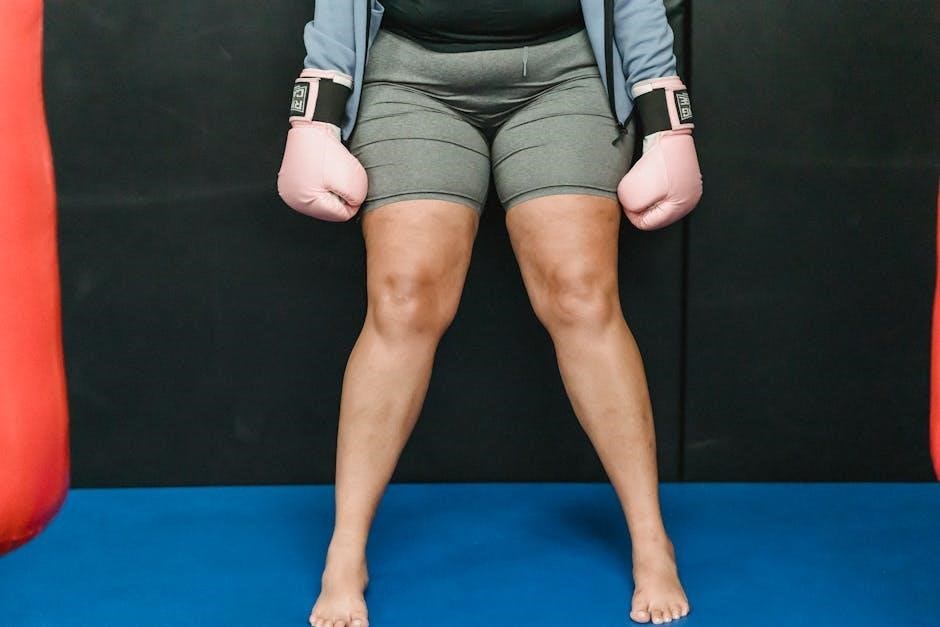Discover the ultimate ring size guide to ensure a perfect fit. Learn how to measure your finger or an existing ring accurately. Find your ideal size with our expert tips and printable tools for precise results every time.
1.1 Importance of Accurate Ring Sizing
Accurate ring sizing is crucial for both comfort and functionality. A ring that is too tight may cause discomfort‚ while one that is too loose could slip off or get damaged. Proper sizing ensures the ring stays securely in place without restricting movement. Measuring correctly is especially important for engagement or wedding rings‚ as they are often worn daily. Incorrect sizing can lead to costly resizing or even damage to the ring. Understanding your finger size in centimeters (cm) is a reliable way to determine your ring size. Factors like finger shape and knuckle size can influence fit‚ so precise measurements are essential. Using a ring size guide or a printable sizer can help you achieve the perfect fit. Remember‚ even small differences in size can make a big difference in comfort and appearance. Always double-check your measurements for the best results.

How to Measure Ring Size at Home
Measure your ring size at home using a string and ruler or by comparing to an existing ring. Wrap the string around your finger‚ mark the overlap‚ and measure in centimeters for accuracy. Ensure a snug fit without restriction for the best results.
2.1 Using a String and Ruler
Measuring your ring size with a string and ruler is a simple and effective method. Start by wrapping a flexible string or a piece of paper around the base of your finger‚ ensuring it sits comfortably and evenly. Mark the point where the string overlaps with a pen or pencil. Remove the string and lay it flat on a ruler to measure the length in centimeters. This measurement represents your finger’s circumference. For the most accurate results‚ measure at the end of the day when your fingers are at their largest. To find your ring size‚ compare this circumference to a standard ring size chart. This method is ideal for those without access to a professional jeweler or a ring sizer tool. It’s essential to ensure the string isn’t too tight or too loose‚ as this can affect the accuracy of the measurement. By following these steps‚ you can determine your ring size confidently at home.
2.2 Measuring an Existing Ring
If you already have a ring that fits perfectly‚ measuring it is a straightforward way to determine your size. Place the ring on a flat surface and measure its internal diameter using a ruler or digital caliper. The diameter is the distance across the ring from one inner edge to the other. Once you have the diameter in millimeters‚ you can find the circumference by using the formula: circumference = π × diameter. For simplicity‚ you can also measure the circumference directly by wrapping a string around the inside of the ring and marking where it overlaps. This method ensures accuracy and avoids the need for complex calculations. Make sure the ring you measure fits the finger it was intended for‚ as fingers can vary in size. By comparing your measurements to a standard ring size chart‚ you can easily determine the correct size. This method is especially useful when purchasing a replacement or matching ring.

Understanding Ring Size Charts
Ring size charts provide a standardized way to determine your ring size by comparing measurements like diameter and circumference. They help ensure a consistent fit‚ whether shopping online or in-store‚ using universal sizing systems.

3.1 Standard Ring Size Charts
Standard ring size charts are essential for determining accurate measurements. They typically measure the finger’s circumference or the ring’s diameter in millimeters‚ which can then be converted to centimeters for clarity. These charts are universal‚ ensuring consistency across different regions and jewelers. By comparing the measured circumference to the chart‚ you can find the corresponding ring size. For example‚ a 16.5mm diameter ring is equivalent to a 52.5mm circumference‚ which translates to a specific size on the chart. Using standard charts eliminates guesswork‚ providing a reliable method for finding the perfect fit. Whether shopping online or in-store‚ these charts serve as a trusted guide for both consumers and professionals in the jewelry industry.
3.2 International Ring Size Conversions
Understanding international ring size conversions is crucial for ensuring a perfect fit when shopping across borders. Different countries use varying systems to denote ring sizes‚ making conversions essential. In the US‚ sizes are numerical‚ while Europe often uses alphabets or millimeter measurements. To convert sizes accurately‚ measure the ring’s inner diameter in millimeters and compare it to standard charts. For instance‚ a 16.5mm diameter corresponds to a size 6 in the US. Europe might list this as 52.5‚ referring to the circumference in millimeters. For centimeter measurements‚ simply divide the millimeter measurement by 10. This guide helps you navigate these differences seamlessly‚ ensuring your ring fits perfectly regardless of the country’s sizing standards.
Determining Ring Size Without a Ring
Estimate your ring size by measuring your finger or comparing it to a printable guide. Use a string wrapped around your finger to find the circumference in centimeters for an accurate fit.
4.1 Estimating Finger Size
Estimating finger size without a ring involves measuring the finger’s circumference. Use a flexible string or a strip of paper‚ wrapping it snugly around the base of the finger. Mark where the ends meet and measure the length in centimeters. This measurement corresponds to the ring’s inner circumference. For accuracy‚ ensure the string isn’t too tight or too loose. Compare the circumference to a standard ring size chart to determine the appropriate size. Keep in mind that fingers can swell slightly during the day‚ so it’s best to measure at room temperature. This method is particularly useful when no existing ring is available for reference.

Factors Affecting Ring Size

Various factors influence ring size‚ including finger fluctuations due to temperature changes‚ weight changes‚ and medical conditions. Jewelry style‚ such as wide bands‚ can also require a different fit. Consider these when determining your size.
5.1 Finger Size Fluctuations
Finger size can fluctuate throughout the day due to various factors. Temperature changes are a significant influence‚ with fingers often swelling in heat and shrinking in cold. This natural variation can affect how a ring fits.
Additionally‚ weight changes‚ hormonal shifts‚ and certain medical conditions may cause finger size to change. For instance‚ retaining fluid can lead to temporary swelling.
To account for these fluctuations‚ it’s advisable to measure your finger at the end of the day when it’s usually at its largest; This ensures the ring will be comfortable during all times.
Understanding these factors helps in choosing the right size‚ ensuring the ring is neither too tight nor too loose. It’s also a good idea to measure multiple times for accuracy before finalizing your size.
5.2 Ring Style and Fit Considerations
Ring style and fit play a crucial role in determining the ideal size. Wider rings may require a larger size to ensure comfort‚ while thinner bands fit more snugly. The type of setting‚ such as prong or bezel‚ can also affect how the ring sits on the finger.
Comfort-fit rings‚ which have a rounded interior‚ may feel looser than standard rings‚ so sizing adjustments might be necessary. Additionally‚ the shape of the ring‚ whether round‚ oval‚ or square‚ can influence the fit.
Personal preference also matters—some prefer a tighter fit for security‚ while others opt for a looser fit for ease of movement. It’s essential to consider these factors alongside standard measurements to ensure the ring is both comfortable and secure.
By understanding how style and fit interact with size‚ you can choose a ring that not only fits perfectly but also complements your lifestyle and preferences. This ensures a balance between aesthetics and practicality.
How to Use a Printable Ring Sizer
Print the ring sizer on standard paper‚ ensuring the scale is accurate. Cut out the sizer and wrap it around your finger to find your perfect size. Compare the fit to the chart for precise measurement and a comfortable fit every time.
6.1 Step-by-Step Guide to Using a Printable Sizer
Start by printing the printable ring sizer on standard A4 or letter-sized paper. Ensure your printer settings are correct to maintain the scale. Cut out the sizer along the dotted lines carefully to avoid distorting the measurements.
Next‚ locate the finger you plan to wear the ring on. Wrap the sizer around the base of your finger‚ ensuring it sits comfortably and not too tight or loose. The sizer should fit snugly but allow for easy removal.
Compare the position where the sizer overlaps with the size indicators on the chart. This will give you your accurate ring size. For the best results‚ measure at the end of the day when fingers are slightly larger due to natural swelling.
Use this method to determine your precise size and ensure your ring fits perfectly. This technique is especially useful when shopping online or designing a custom piece of jewelry.
